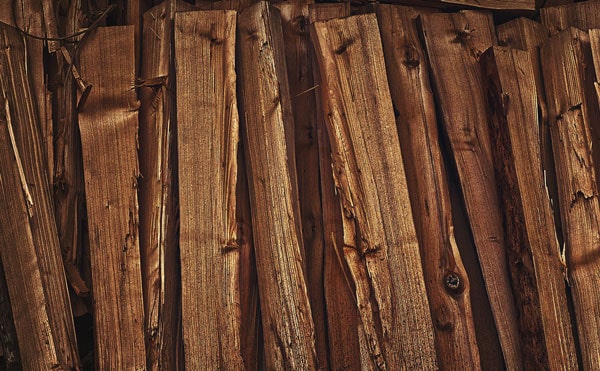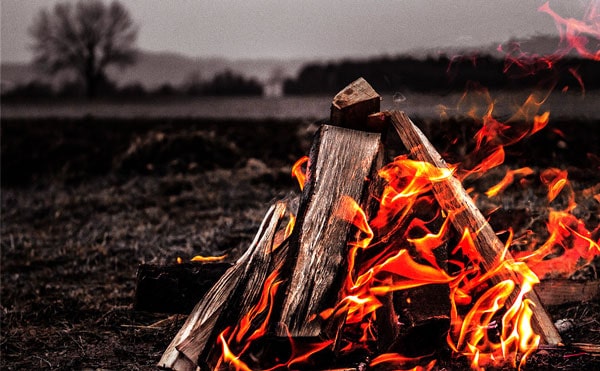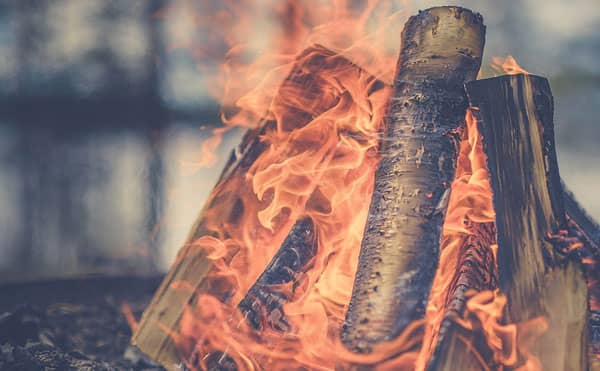
薪の組み方
- 作成日
- 編集日2024-07-04
薪の組み方別での焚き火の特性や作成方法を解説。メジャーな組み方から北欧伝統の組み方まで。
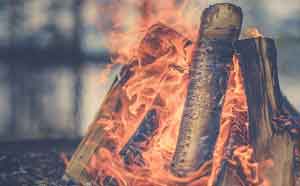
概要
薪の組み方によって「長時間使える」「高火力」「料理がしやすい」等それぞれ特性があるので、何も考えずにポイポイ投入するのではなく自分の思い通りに火をコントロールしてみましょう。
ちなみに焚き火台での使用感も書いていますが基本的には直火での使用を想定しています。
薪の種類
このページで使用している薪の名称イメージのまとめです。
こちらを参考にして読み進めてみてください。
| 火口 | ライターで簡単に火が着くような素材。木とは限らない |
|---|---|
| 焚付 | 炭として残らずに燃え尽きるような木や枝。最大親指くらいの太さ |
| 薪 | 炭として残る太さの木。枝と呼べない太さ |
| 丸太 | 斧で割らないと薪として使えないような木。薪を数本合わせたような太さ |
詳しくは木の種類については木・薪のページも参照してください。
ティピー型
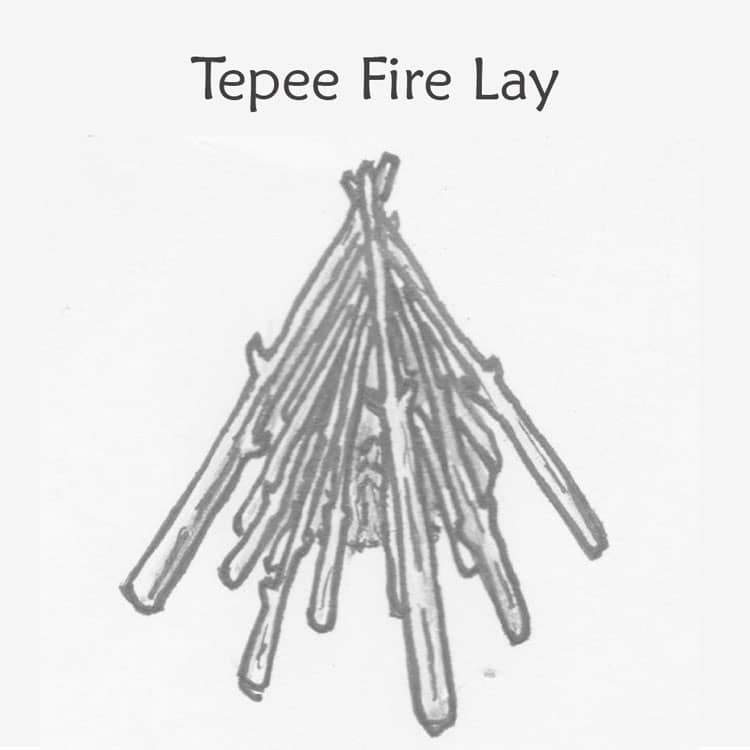
ティピーテント(ワンポールテント・インディアンテント)のような形をしている薪の組み方。
特徴
中心に酸素が多く入るように作られていて着火に優れていて火力が高い。
ただし薪の消費量は多く新しく薪を焚べる時に崩れる可能性がある。
作り方
- 中心になる箇所に火口を配置する
- 火口の周りに焚付用の枝を並べる
- 焚付に触れる位置から薪をA型(ティピー型)になるように立て掛ける
コツとしては焚付は広く並べるよりも高く積む感覚で並べると薪に火が移りやすくなります。
焚き火台でティピー型
ティピー型は高さが出て不安定で倒れたりすると大事になりかねないので焚き火台での使用はおすすめしません。
火力があるので余った薪の処理として活用できますが、付きっきりでするようにしましょう。
同じ高火力型ではログキャビン型もありますが薪の処理として使う場合は薪のサイズでどちらにするか判断しましょう。
リーントゥ型
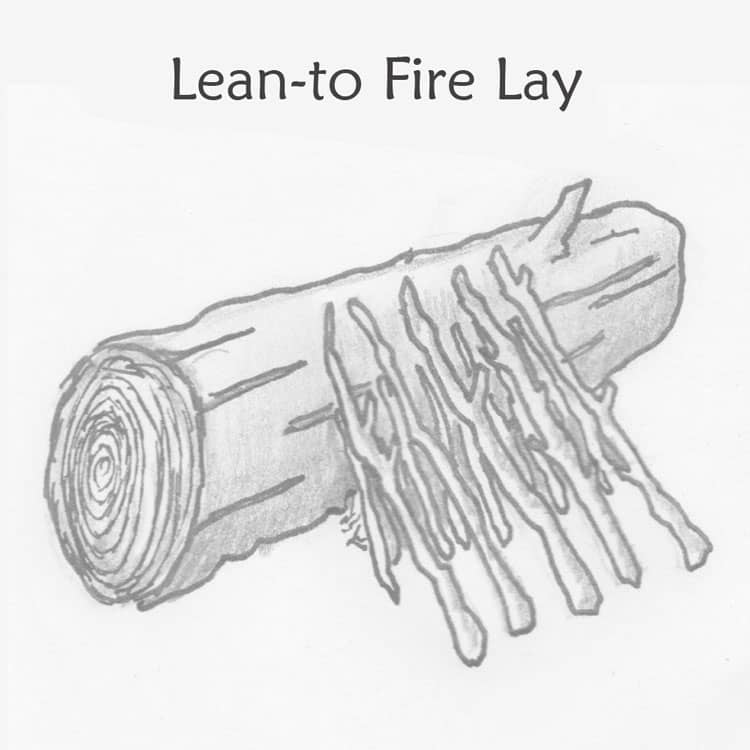
大きく太い丸太に立てかけるようにする薪の組み方。
特徴
丸太が風よけの役割となり薪が屋根の代わりになるので雨風に強い組み方。
ただし風よけの丸太を燃やし切るのが大変なので公共の場では不向き。
作り方
- 丸太を風に逆らって縦に配置する
- 丸太の風下側に火口を配置する
- 火口の上に寄りかかるように焚付を配置する
- 焚付に寄りかかるように薪を配置する
必ず丸太の風下側に薪を配置すること。
風よけ用の丸太はなるべく燃え尽きにくいものを選びましょう。
水に浸けて濡らしておく人もいるみたいです。
焚き火台でリーントゥ型
風よけになるような太めの丸太が必要なので焚き火台は使いにくいですが、風よけとしての機能を捨ててしまえば形作ることは可能です。並列に並べるよりも地面と隙間ができ風通しが良いので火力を上げたい時に使用できます。
ロングファイヤー型
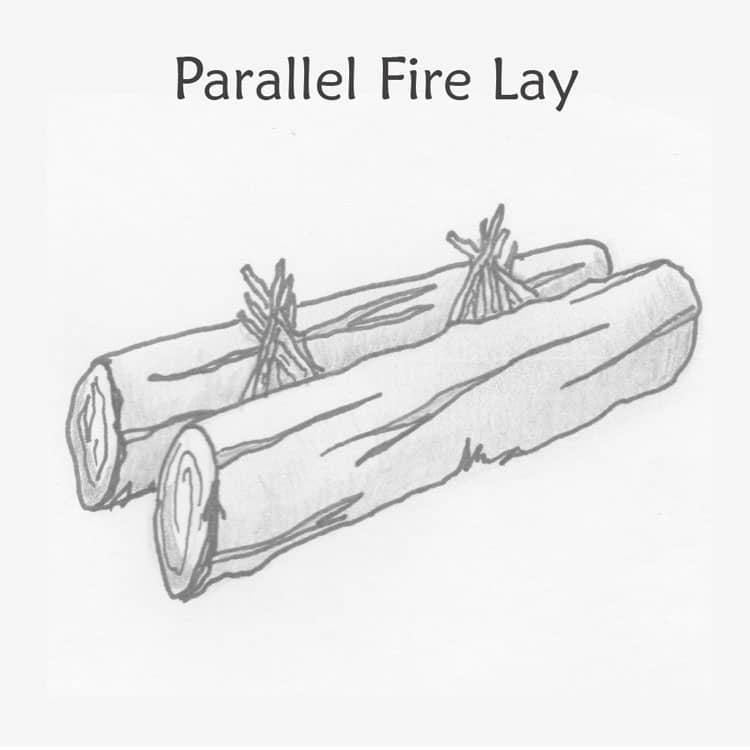
太い薪で火を挟む形の薪の組み方。
パラレルファイアやハンティングファイアとも呼ばれる。
特徴
丸太の間隔を広げれば弱火になり狭めると強火になり、火力調整もし易い薪の組み方。
空気が直接火の中を通り抜けるような設計なので均一に燃えるのも特徴。
作り方
- 2本の長い薪を間隔を空けて平行に配置する
- 丸太の間に何箇所かに分けて火口を配置する
- ティピー型かリーントゥ型になる方に焚付を配置する
火が安定したら必要に応じて丸太の間に薪を追加していきます。
丸太はなるべく燃え尽きにくいものを選びましょう。
焚き火台でロングファイヤー型
安定性もあり小さいサイズでも作れるので焚き火台ではオススメの組み方。
料理をするなら直接クッカーも置きやすく火力調整もしやすいので、デフォルトでロングファイヤー型で配置しておくと楽。
ログキャビン型
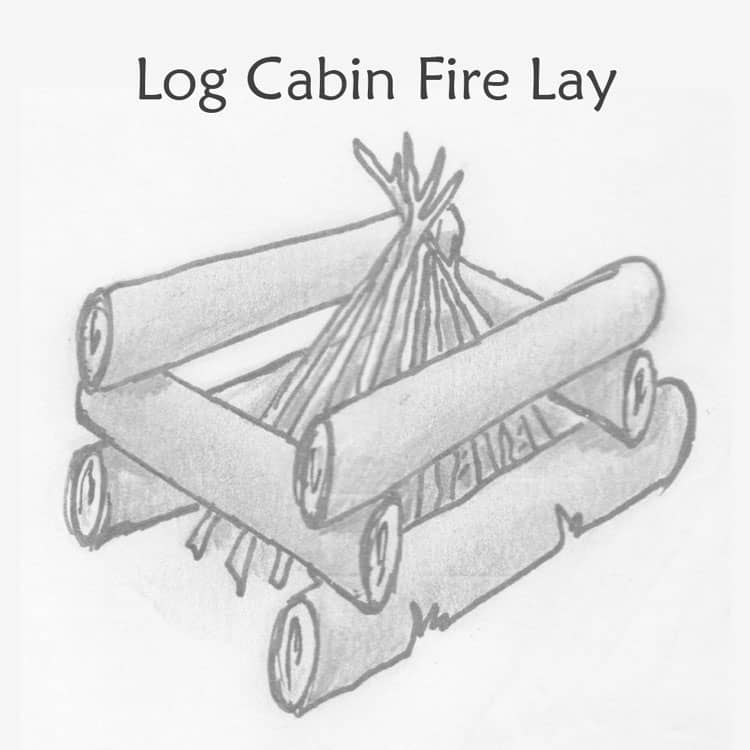
丸太小屋のような形の井桁に薪を組む方法。
通称キャンプファイヤー型。
特徴
着火しやすく火力も高い。薪が壁の役割にもなるので強風でも安定して燃焼する。
また広く背が高いので光源としても使える。
作り方
- 火口と焚付でティピー型を作成する
- ティピーを挟むように縦に2本組む
- 縦の2本に乗せるように横に薪を2本組む
- 工程2と3を繰り返す
コツは太い薪から細くなるように乗せていくこと。
最初に火口と焚付をティピー型に組むのが理想ですが、周りの井桁が倒れなければ立て掛けるように配置しても大丈夫です。
焚き火台でログキャビン型
井桁の部分が燃え切ると崩れてしまうので、焚き火台では2~3段くらいで留めましょう。
ティピー型と同じ様に火力があるので余った薪の処理として活用できますが、高さにもよりますが崩れた時の被害はログキャビン型の方が大きいので注意。
ピラミッド型
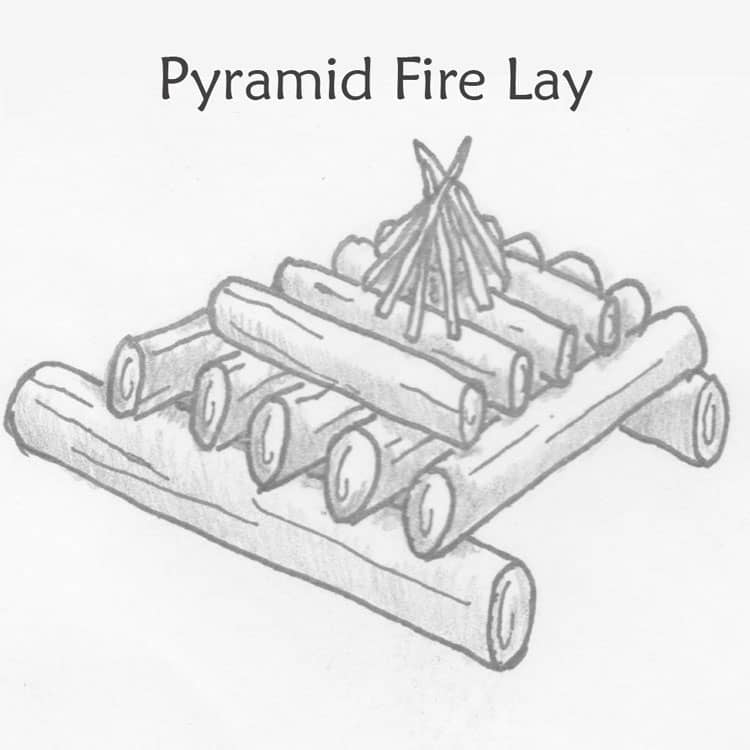
薪の上で火を炊く薪の組み方。
カウンシルファイア、アップダウンファイアとも呼ばれる。
特徴
薪を焚べること無く長時間燃焼してくれる。
ただし高さがあり不安定なので料理がしにくいが、じっくりと燃えるので良い熾火はたくさんできる。
作り方
- 丸太を離して平行に配置する
- 丸太にまたがるように薪を配置する
- 工程2の薪よりも細めの薪を格子状になるように配置する
- 最上部にティピー型に火口を焚付を配置する
最初に丸太を両サイドに設置することで下から吸気できるようにするのがポイント。
焚き火台でピラミッド型
ノコギリ作業が多く薪のサイズも選ぶので組めない焚き火台も多いですが、熾火やじっくりと焚き火を楽しみたい時にオススメ。
スターファイヤー型
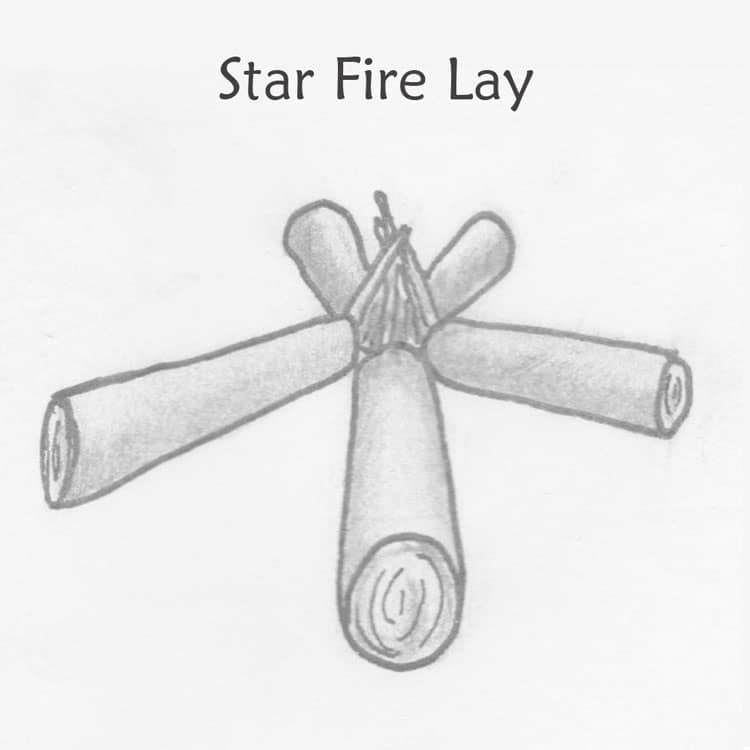
上から見た時に星型になるように配置する薪の組み方。
特徴
低火力だが薪を節約しながら長時間燃える形。
熱量も少ないので冬場には向かない。
作り方
- 中心になる箇所に火口と焚付を配置する
- 火口の周りに5~6本の薪を星型に配置する
燃えるに連れて薪を中央にズラしていく必要がある。
火付が悪い薪の場合は先を細く削ると火が付きやすくなる。
焚き火台でスターファイヤー型
大きなスペースが必要なので焚き火台では不向き。側面に立てかけるように配置しても立体的なので崩れることが多い。
番外編
クロスディッチ型
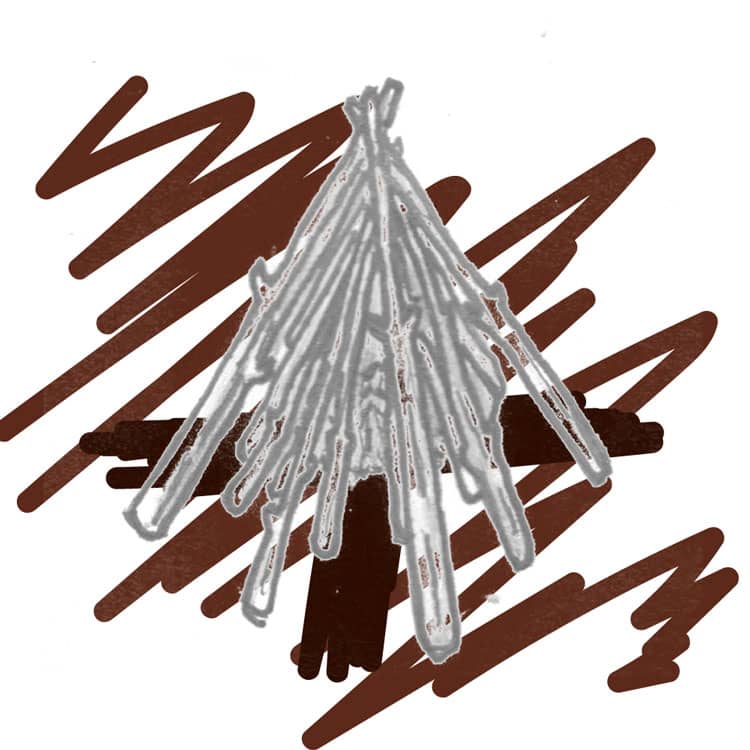
十字型の溝を掘った地面の上にティピー型やスターファイヤー型を配置する方法。
特徴
溝から吸気するので火力が高くなる。
直火の時に斜面にする方法と理屈は同じ。
作り方
- 十字形に深さ4cmほどの溝を掘る
- 溝の上に薪を組む
スウェーデントーチ
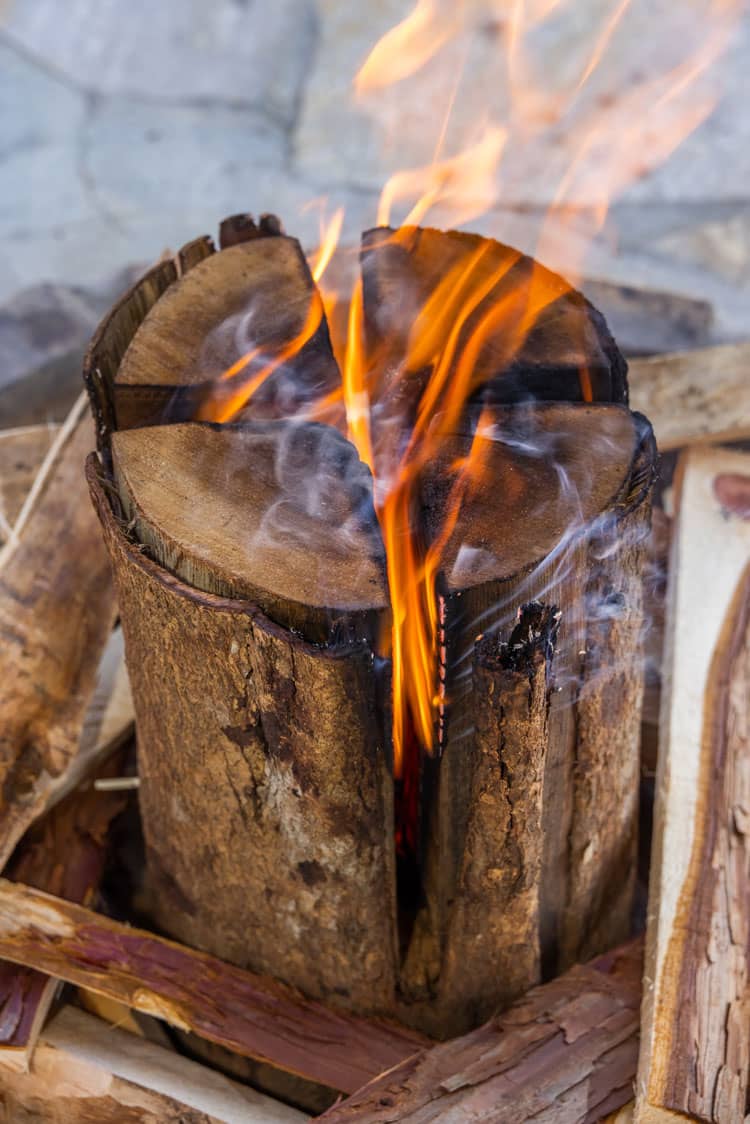
コンロとして使えるスウェーデン流の焚き火。
特徴
トーチのように勢いよく火が出るほど高火力で、上部が平面なのでコンロとして非常に使いやすい形。
自分で作成するものだったが、昨今のキャンプブームに乗って最近では普通に売っている。
作り方
- 丸太を切る
- 縦に3~4本の切り口を作る
- 切り口に火口と焚付を詰め込む
最後まで切らずに下部がつながっている状態にしておくこと。
本場のスウェーデントーチは基本的にはチェーンソーでの作業になるが、市販の薪を台形に切り上底を向かい合わせる形にしてワイヤーなどで固定しても作れる。
合わせた時に中心に空洞ができるように薪を切っておき、その空洞に火口と焚付を詰め込む。
ラーパネンヴァルケア
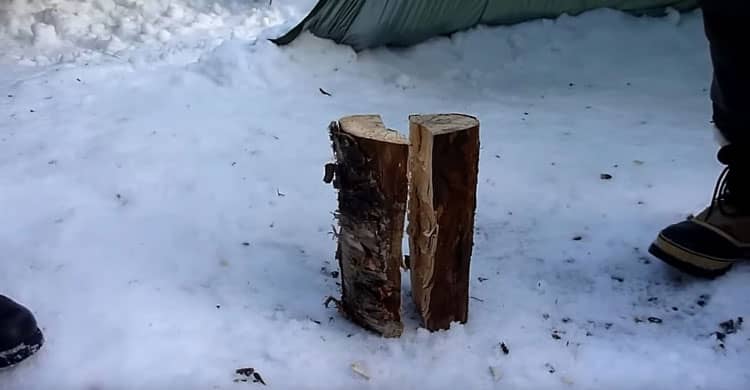
ロングファイヤー型を縦起きにした形。
特徴
スウェーデントーチの原型で、火力は落ちるが斧で作成できるのでキャンプやブッシュクラフトで作れる。
作り方
- 丸太を縦に割る
- 太い方の丸太の中心部を1cmほど割る
- 両方の切り口にささくれを作る
- ささくれが下を向くように丸太を立てる
- 火口と焚付を隙間に挟む
切り口にささくれを作ることにより火付が良くなる。
丸太の間隔を広げれば弱火になり狭めると強火になり、火力調整もし易いが焚付が崩れたり本体が倒れないように注意。
ラコヴァルケア
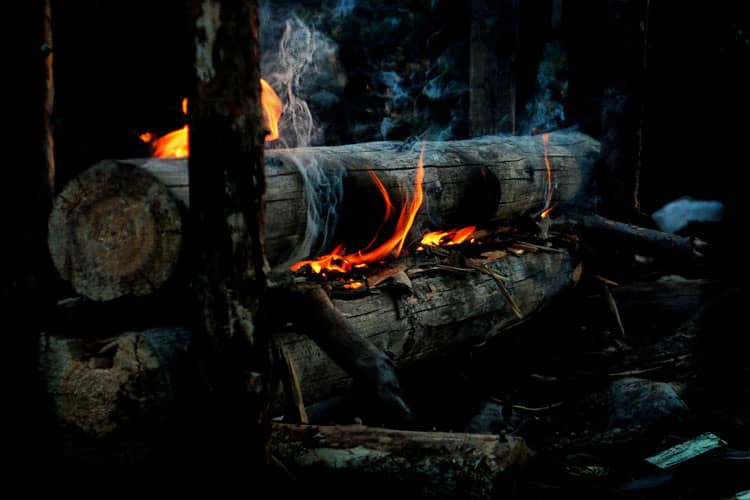
丸太を2つ縦に寝かせた形
特徴
火力が弱いので丸太を長く持たせることができる。
また幅が広いので暖房として使用するのに向いている。
作り方
- 2本の丸太の1辺を平らにする
- 1本の丸太を平らにした部分が上を向くように配置する
- 丸太の両端の外側に杭となる木を2本刺す
- 細めの薪を丸太の両端に配置する
- 丸太の上に火口と焚付を配置する
- 2本目の丸太を平らにした部分を下にして配置する
- 杭の向かい側にもう2本の杭を刺し丸太を固定する
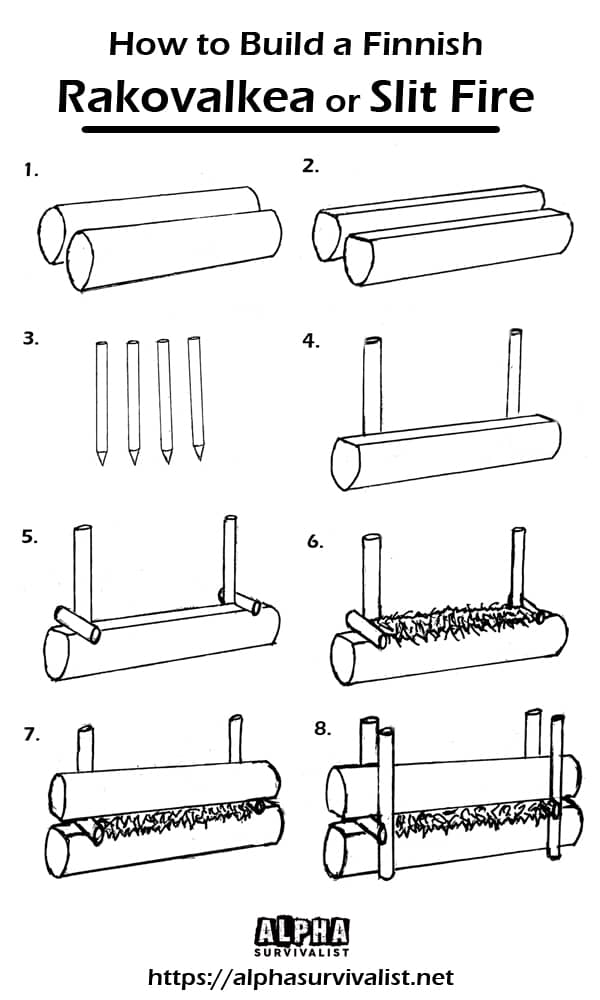
杭になる木は丸太に負けないよう太めの物を使用する。
ダコタファイヤーホール
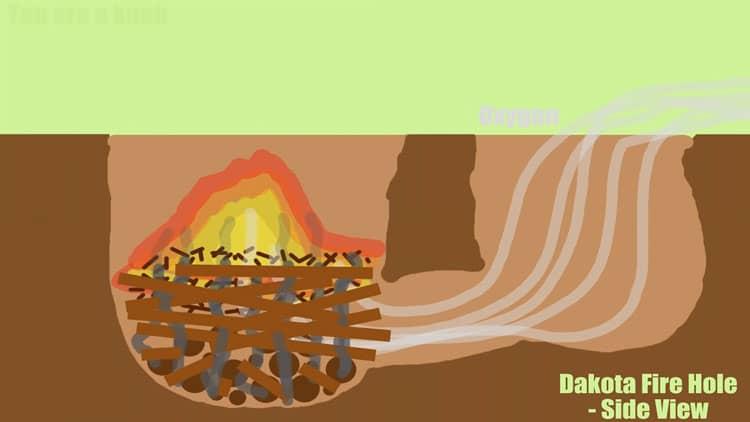
2つの穴を地下でつなげた形。
特徴
上昇気流を利用して穴から空気を吸うので吸気に優れている。さらに空洞部分で空気が熱されるので安定した焚き火ができる。
火が地下にあるので料理もしやすい。
作り方
- 20cm程度の深さの穴を掘る
- 20cmほど離れた所にもう1つ同じような穴を掘る
- 最深部を繋げるように壁に穴を開ける
穴の感じは土質にもよるので試行錯誤して間隔を掴みましょう。
セルフフィーディングファイア
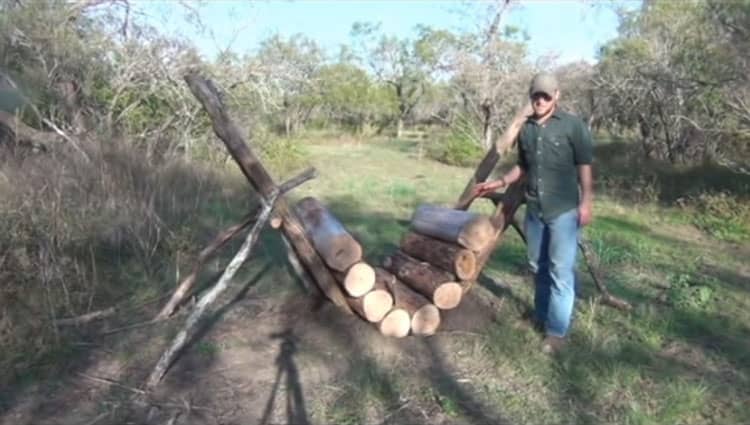
V字型に配置された丸太の組み方。
特徴
丸太が燃えるに連れて新しい丸太がV字を下がってきて、薪をくべること無く長時間焚き火をできる。
作り方
- 丸太が収まる程度の長さの穴を掘る
- 丸太を乗せれてる大きさの丸太でAフレーム型に組んだ物を2組作成する
- 作成したAフレームを穴に入れて支えの木を当てて傾斜状態で固定する
- 両サイドに燃焼用の丸太を下から組む
- 最下部の丸太の間に火口と焚付を配置する
支えの木が燃えないようにするには穴の大きさが大事なのでしっかり調整しましょう。
燃焼用の丸太は丸い必要があり、市販の角張った薪では失敗することが多いので注意。

